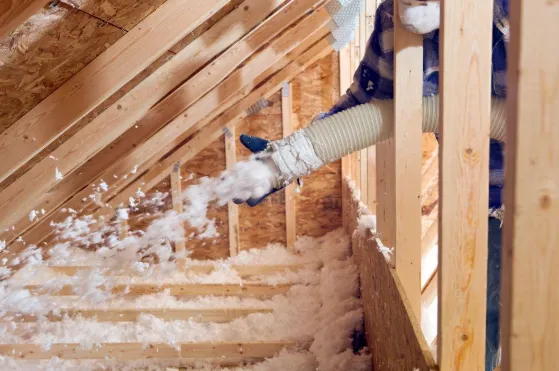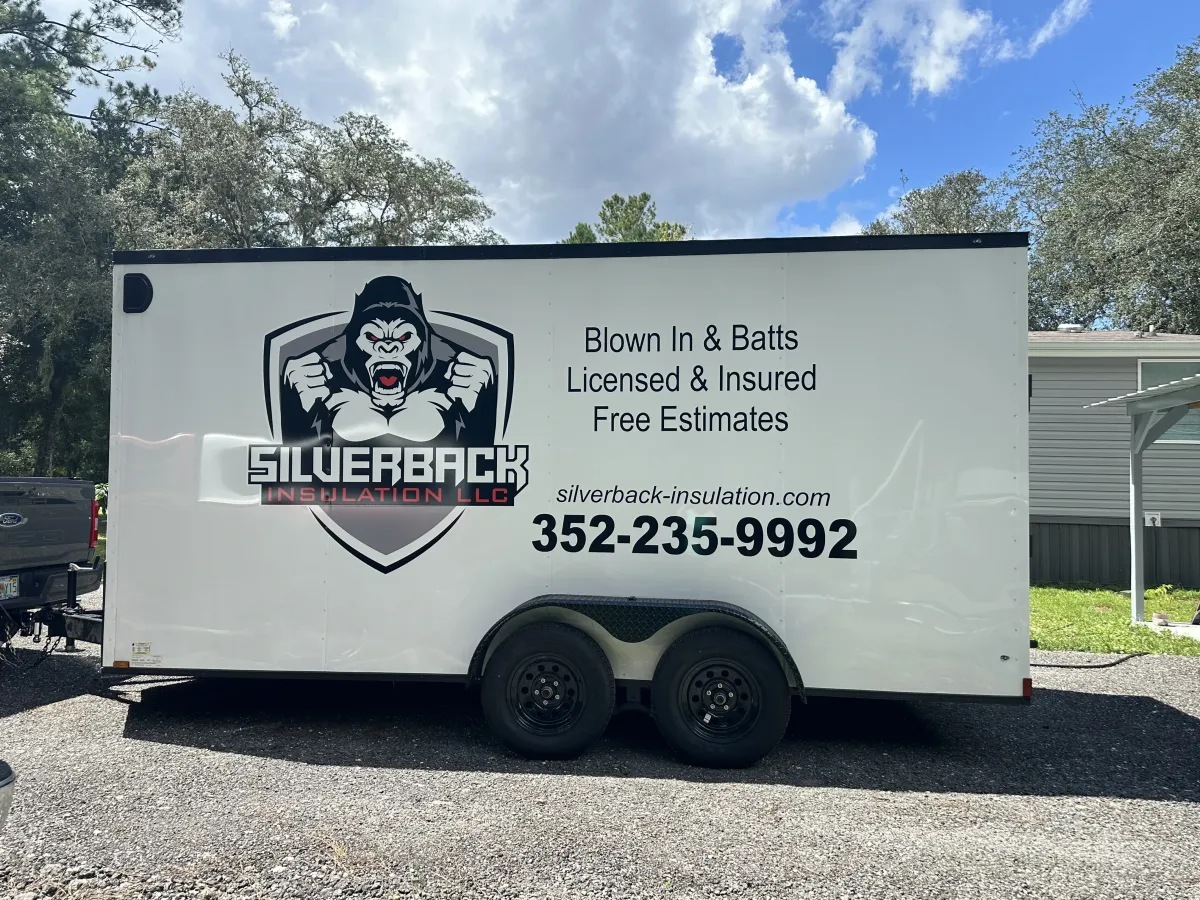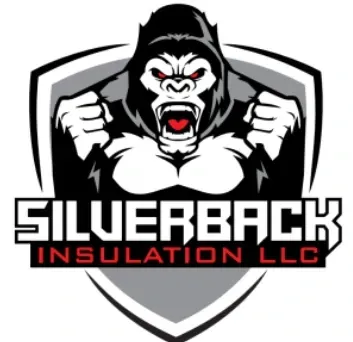What Is Blown-In Insulation and How Is It Used in Astor, FL Homes?
Living in Astor, FL means dealing with both warm and cool seasons, making efficient heating and cooling systems a top priority. But what if your energy bills are still high, even with a modern HVAC system? One often overlooked solution is blown insulation. Understanding what is blown-in insulation and how is it used in Astor FL homes could be the key to lowering energy costs and creating a more comfortable, energy efficient indoor environment.

What Is Blown-In Insulation and How Is It Used in Astor, FL Homes?
Blown-in insulation is a simple yet powerful way to improve energy efficiency in Astor, FL homes. Whether you’re battling high utility bills or uneven indoor temperatures, this insulation method can help seal gaps and improve overall comfort. In this article, we explain what blown-in insulation is, how it’s installed, and why it’s an effective solution for homeowners in both warm and cool seasons.
What Exactly Is Blown-In Insulation?
Blown in insulation, also known as loose fill insulation, is a type of insulation material that is literally “blown” into walls, attic spaces, and other hard to reach areas using specialized equipment. The material comes in small pieces and forms a seamless layer that helps resist heat flow and air leaks.
Common blown-in insulation types include:
Blown in cellulose insulation (or cellulose blown-in insulation): Made from recycled paper products, especially recycled newspaper.
Blown in fiberglass insulation: A lightweight option using tiny glass fibers.
Mineral wool: Made from rock or slag, offering excellent fire protection and sound absorption.
Unlike batts, which are rolled or laid into place, blown insulation molds itself into every nook and cranny, ensuring complete coverage even in oddly shaped spaces.

Why Is Blown-In Insulation Ideal for Astor, FL Homes?
In Florida, homes face unique climate challenges. High humidity and heat in the summer, and chilly evenings in the winter mean homeowners must find ways to maintain consistent indoor temperatures. Installing blown-in insulation helps meet this goal.
Here’s why it works well in Astor:
Adapts to older and newer home building styles
Fills gaps in attic insulation and wall cavities
Improves energy efficiency year-round
Acts as an eco friendly option due to recycled materials
Provides moisture resistance to protect the home's structure
With a properly insulated home, you’ll benefit from a more balanced HVAC system and lower energy bills.
How Does Blown-In Insulation Work?
This insulation works by trapping tiny air pockets in the material. These pockets resist heat flow, keeping warm air inside during winter and hot air outside during summer. This concept is what gives insulation its r value, or its ability to resist thermal flow.
Key aspects of the process include:
Preparation: Professionals inspect attic spaces and wall cavities.
Blowing: Using specialized equipment, the insulation material is blown into place.
Thermal imaging: Often used post-installation to verify complete coverage and optimal performance.
Fire safety and fire resistance: Cellulose material is treated to improve fire safety.
Blown in cellulose and blown in fiberglass insulation provide excellent thermal resistance and can significantly reduce your carbon footprint.

Where Is Blown-In Insulation Typically Installed?
One major benefit of blown in material is its versatility. It’s often used in areas where traditional fiberglass batts might not reach.
Attic insulation
Wall cavities
Filling walls in existing or older homes
Hard to reach areas behind pipes or under floors
These areas are often under insulated and can be responsible for a major portion of lost energy in your home.
What Are the Main Benefits of Installing Blown-In Insulation?
When homeowners in Astor choose professional insulation services, they often do so for multiple compelling reasons.
Benefits include:
Significant energy savings over time
Lower energy costs and utility billl
Improved indoor environment with consistent indoor temperatures
Long term energy savings
Fire protection, especially when using fire resistant cellulose
Moisture resistance that helps prevent mold
Higher value performance even in older homes
Environmentally responsible, made from recycled paper or recycled materials
The seamless layer created by blown insulation also seals air leaks, which is key to improving energy efficiency.
What’s the Difference Between Cellulose and Fiberglass Blown-In Insulation?
Both cellulose and fiberglass are popular, but they have some differences.
Blown in cellulose insulation:
Made from recycled paper products
Often seen as an eco friendly option
Treated for fire safety and moisture resistance
Offers excellent thermal resistance
Blown in fiberglass insulation:
Lightweight and easier to install in large quantities
Resists moisture but may not have the same fire protection
Slightly lower r value per square foot compared to cellulose
The cellulose costs can be slightly higher due to its treatment process, but many find it worth it for the energy savings and eco-conscious qualities.
Can Homeowners Install Blown-In Insulation Themselves?
While it may seem like a good DIY project, insulation installation requires some skill, especially for complete coverage. Using the wrong insulation types or tools can result in gaps and heat flow issues.
Risks of DIY include:
Incomplete coverage and under insulated areas
Lack of proper fire resistant treatment
Insufficient understanding of value requirements
Improper sealing of air leaks
For best results, hiring professionals ensures professional installation, quality materials, and proper use of specialized equipment.
How Do Professional Insulation Services Work?
When you work with a trusted provider like Silverback Insulation, the process is streamlined and tailored to your home.
What to expect:
Home inspection to identify insulation gaps
Customized insulation plan with the right blown in material
Blowing insulation using safe and efficient methods
Final inspection using thermal imaging to confirm results
Professionals also offer guidance on how insulation upgrades can lower energy bills and increase the comfort of your home.
What Is the Cost of Installing Blown-In Insulation in Astor, FL?
Prices vary depending on the square foot area, the insulation material, and labor costs. The cost for cellulose blown-in insulation may be slightly higher than fiberglass but can pay off in long term energy savings.
Factors affecting cost:
Type of material used (cellulose, fiberglass, mineral wool, etc.)
Size of the area (attic, walls, whole home)
Accessibility of the area (e.g., hard to reach spaces)
Professional vs DIY labor
Even though there’s an upfront investment, the energy savings quickly offset the initial cost.
How Does Blown-In Insulation Compare to Spray Foam Insulation?
While spray foam insulation is another popular choice, it differs from blown insulation in a few key ways.
Spray foam:
Expands after application, sealing cracks and gaps
Offers slightly higher r value
More expensive
Can sometimes limit breathability if over-applied
Blown insulation:
Offers excellent thermal resistance
Better for filling walls and attics in older homes
More cost-effective for large areas
Uses recycled materials and offers a greener solution
Both options improve energy efficiency, but blown insulation is often preferred for homes looking for a balance of performance, sustainability, and affordability.
Can Blown-In Insulation Help My HVAC System Perform Better?
Absolutely. A properly insulated home puts less strain on your heating and cooling systems. That means:
Less runtime for your HVAC system
Improved indoor air comfort
Reduced maintenance needs
Extended lifespan of cooling systems
It also improves your home's r value, helping you avoid being under insulated, which is common in most attics.
Conclusion: Is Blown-In Insulation Worth It for Astor, FL Homes?
Yes—when you consider all the benefits, blown-in insulation offers a smart, eco-conscious, and cost-effective way to enhance comfort, improve energy efficiency, and lower energy bills in Astor homes. Whether you're building a new home or upgrading an older one, professional insulation services like those from Silverback Insulation can make a dramatic difference.
Key takeaways:
Blown in insulation is ideal for attics, walls, and tight spaces.
It provides higher value, consistent indoor temperatures, and energy savings.
Professional installation ensures complete coverage and long-term performance.
Materials like blown in cellulose and blown in fiberglass insulation are safe, effective, and often made from recycled materials.
If you’re tired of high utility bills and an uncomfortable home, installing blown-in insulation could be the solution you’ve been looking for.
Works Cited:
“Blown-In Insulation.” U.S. Department of Energy, https://www.energy.gov/energysaver/blown-insulation. Accessed 26 May 2025.
“Types of Insulation.” Energy Star, https://www.energystar.gov/campaign/seal_insulate/types_insulation. Accessed 26 May 2025.
“Insulation Materials.” EPA, https://www.epa.gov/greenhomes/insulation-materials. Accessed 26 May 2025.
Frequently Asked Questions
What is the difference between blown-in insulation and traditional fiberglass batts?
Blown-in insulation is made of loose fill material such as cellulose or fiberglass, which is blown into place using specialized equipment. It fills small gaps, irregular spaces, and wall cavities better than traditional fiberglass batts, which are pre-cut panels. Because blown insulation molds to any space, it ensures more complete coverage and better energy efficiency—especially in hard to reach areas.
Is blown-in insulation safe for my home and family?
Yes, blown-in insulation is safe when professionally installed. Blown in cellulose insulation is made from recycled paper treated with fire resistant chemicals for improved fire safety. Blown in fiberglass insulation is also non-combustible. Both types offer excellent thermal resistance, helping regulate your indoor environment without releasing harmful chemicals.
How much money can I save by installing blown-in insulation?
Installing blown-in insulation can lead to significant energy savings. Homeowners in Astor, FL often see lower energy costs and utility bills due to reduced air leaks and improved performance from their HVAC system. While actual savings vary, many experience a noticeable drop in heating and cooling costs within the first year.
Can I install blown-in insulation myself?
While DIY kits are available, professional installation is recommended for the best results. Insulating your home with blown in material requires specialized equipment, knowledge of proper r value standards, and techniques to ensure complete coverage. Incorrect installation may leave gaps or reduce your home's energy efficiency.
How do I know if my home in Astor is under insulated?
Signs of an under insulated home include:
-Uneven temperatures between rooms
-High energy bills despite using energy efficient appliances
-Cold floors or hot ceilings
-HVAC system constantly running
-Drafts near walls or attic spaces
A professional inspection and thermal imaging scan can determine whether blown-in insulation is needed to improve your home’s comfort and efficiency.

Professional Insulation services in Astor, Florida and Beyond.
Top Links
Locations
Contact Us
Address: 55024 3rd street, Astor Florida 32102
Business Hours
Monday - 8 AM–4 PM
Tuesday - 8 AM–4 PM
Wednesday - 8 AM–4 PM
Thursday - 8 AM–4 PM
Friday - 8 AM–4 PM
Saturday - 8 AM–2 PM
Sunday - Closed
Copyright © 2025 Silverback Insulation. All rights reserved.